-
 Bitcoin
Bitcoin $110000
-1.38% -
 Ethereum
Ethereum $4353
-1.95% -
 XRP
XRP $2.834
-1.20% -
 Tether USDt
Tether USDt $1.000
0.02% -
 BNB
BNB $847.1
-1.38% -
 Solana
Solana $206.1
-2.42% -
 USDC
USDC $0.9999
0.02% -
 Dogecoin
Dogecoin $0.2144
-1.54% -
 TRON
TRON $0.3378
-0.74% -
 Cardano
Cardano $0.8127
-2.69% -
 Chainlink
Chainlink $23.06
-2.34% -
 Hyperliquid
Hyperliquid $45.24
-0.77% -
 Ethena USDe
Ethena USDe $1.001
0.03% -
 Sui
Sui $3.285
-2.46% -
 Bitcoin Cash
Bitcoin Cash $588.1
-1.85% -
 Stellar
Stellar $0.3577
-1.93% -
 Avalanche
Avalanche $24.66
-2.52% -
 Hedera
Hedera $0.2129
-3.80% -
 Cronos
Cronos $0.2658
-2.11% -
 UNUS SED LEO
UNUS SED LEO $9.522
0.19% -
 Litecoin
Litecoin $110.6
-1.80% -
 Toncoin
Toncoin $3.122
-1.79% -
 Shiba Inu
Shiba Inu $0.00001212
-2.78% -
 Polkadot
Polkadot $3.770
-2.40% -
 Uniswap
Uniswap $9.346
-2.95% -
 Dai
Dai $0.9999
-0.02% -
 Monero
Monero $269.5
0.04% -
 Aave
Aave $319.6
-1.91% -
 Ethena
Ethena $0.6907
-5.62% -
 Bitget Token
Bitget Token $4.891
-3.49%
What is dual mining?
Dual mining allows miners to simultaneously mine two cryptocurrencies using the same GPU, maximizing hardware efficiency and increasing profitability.
Jul 12, 2025 at 06:35 am
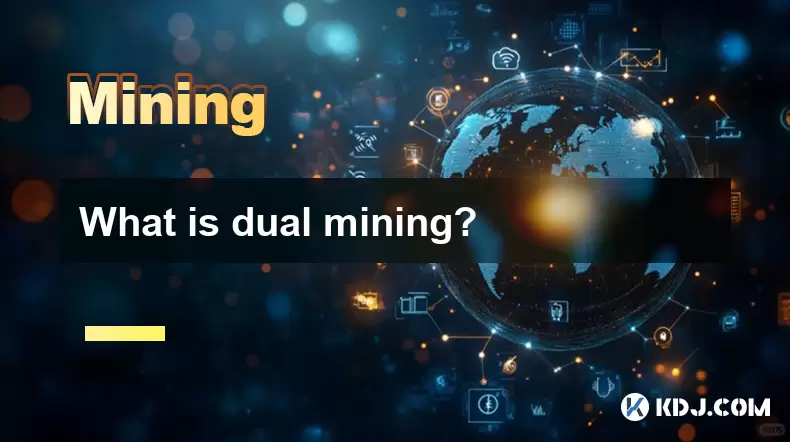
Understanding the Concept of Dual Mining
Dual mining refers to the process of simultaneously mining two different cryptocurrencies using the same hardware. This method allows miners to maximize their resource utilization by leveraging the idle capacity of their mining rigs to generate additional income. The core idea is that while a GPU or ASIC is dedicated to mining one blockchain, it can also contribute hashing power to another network without significantly affecting the primary mining operation.
Unlike traditional mining setups where a single algorithm or cryptocurrency is targeted at a time, dual mining splits the computational workload across two chains. This approach is especially popular among GPU miners, as modern graphics cards are versatile enough to handle multiple algorithms in parallel.
The key benefit lies in optimizing energy consumption and increasing overall profitability.
How Does Dual Mining Work?
Dual mining operates by utilizing different components of the GPU for each mining task. For instance, while the main processing units are focused on mining Ethereum using the Ethash algorithm, the memory (VRAM) or secondary cores may be used to mine another coin like Decred or Siacoin using alternative algorithms such as Dagger-Hashimoto and Blake256, respectively.
Most dual mining software works by:
- Allocating specific threads or compute units to each algorithm
- Running both mining processes concurrently without interference
- Connecting to separate pools or nodes for each cryptocurrency
This setup doesn't require additional hardware investment but does demand careful configuration to ensure optimal performance and stability.
Popular Cryptocurrencies for Dual Mining
Certain combinations of cryptocurrencies have become standard for dual mining due to their compatible algorithms and minimal resource overlap. Some widely adopted pairs include:
- Ethereum + Decred: Ethash (primary) and Blake256 (secondary)
- Ethereum + Siacoin: Ethash and Blake2b
- Zcash + Ethereum: Equihash and Ethash
These combinations allow miners to utilize different aspects of the GPU — for example, while Ethereum uses more VRAM, Decred utilizes the ALU units more efficiently. This balance ensures that neither process hampers the other significantly.
It's crucial to research which coins offer the best returns based on current market prices, difficulty levels, and pool fees before choosing a pair.
Setting Up Dual Mining: A Step-by-Step Guide
To begin dual mining, follow these steps carefully:
- Choose compatible mining software, such as Claymore’s Dual Miner or PhoenixMiner, which support dual mining natively.
- Download and install the software on your system, ensuring compatibility with your GPU drivers and operating system.
- Configure the batch file or config file with the wallet addresses, mining pools, and algorithms for both cryptocurrencies.
- Allocate appropriate intensity or thread settings for each coin to maintain system stability and avoid overheating.
- Launch the miner and monitor performance using tools like MSI Afterburner or HWInfo64.
Each step must be followed precisely to avoid errors or inefficiencies. Misconfiguration can lead to reduced hashrates or crashes.
Potential Risks and Considerations in Dual Mining
While dual mining offers increased earnings potential, it also comes with certain risks and trade-offs:
- Increased power consumption can offset some of the gains if electricity costs are high.
- Higher GPU temperatures may shorten the lifespan of hardware components if cooling systems are inadequate.
- Potential instability due to conflicting workloads or incompatible algorithms.
- Reduced solo mining effectiveness since dual mining typically requires connection to public pools.
Miners should conduct thorough testing and benchmarking before committing to a long-term dual mining strategy.
Frequently Asked Questions (FAQs)
Q1: Can I dual mine with an ASIC instead of a GPU?Currently, most ASICs are designed to mine only one specific algorithm and cannot perform dual mining. GPUs remain the preferred choice due to their flexibility and multi-algorithm capabilities.
Q2: Do I need separate wallets for each cryptocurrency when dual mining?Yes, you must use separate wallets for each coin you mine. Each mining pool will require its respective wallet address to credit your earnings correctly.
Q3: Will dual mining slow down my primary mining performance?There may be a slight decrease in performance for the primary coin due to shared resources, but this is usually minimal and often outweighed by the added income from the secondary coin.
Q4: Are there any legal concerns with dual mining?As long as you're mining legitimate cryptocurrencies and following local laws regarding cryptocurrency operations, dual mining is entirely legal. Always ensure compliance with regional regulations.
Disclaimer:info@kdj.com
The information provided is not trading advice. kdj.com does not assume any responsibility for any investments made based on the information provided in this article. Cryptocurrencies are highly volatile and it is highly recommended that you invest with caution after thorough research!
If you believe that the content used on this website infringes your copyright, please contact us immediately (info@kdj.com) and we will delete it promptly.
- Dogecoin's Key Indicator Flashes Buy Signal Amidst Market Drop: A New York Minute
- 2025-09-04 22:25:15
- Gold, Trump, and the Flight to Safety: What's Driving the Market in 2025?
- 2025-09-04 22:25:15
- BlockchainFX (BFX): The New Exchange Token Rivaling BNB and Hyperliquid?
- 2025-09-04 20:30:11
- Cardano Price, Pi Coin, Remittix Presale: Navigating the Crypto Landscape
- 2025-09-04 21:05:11
- Polygon, Blockchain, and India: A Web3 Powerhouse
- 2025-09-04 20:30:11
- Justin Sun, HTX, and High-Yield Products: A Deep Dive into Crypto's Latest Trends
- 2025-09-04 20:45:12
Related knowledge
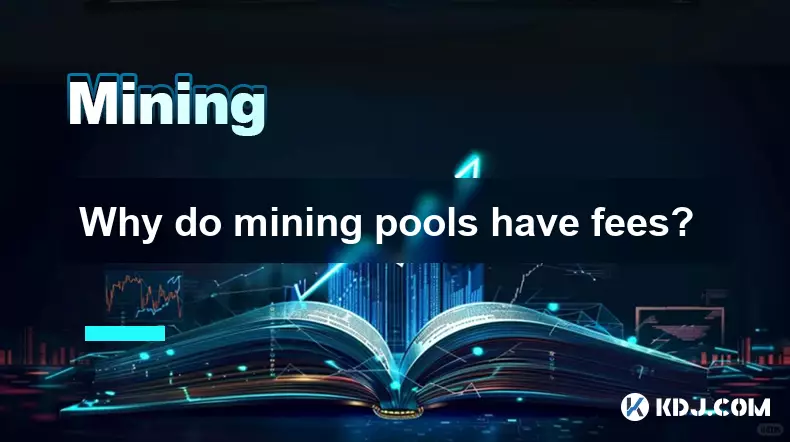
Why do mining pools have fees?
Sep 04,2025 at 09:18pm
Understanding the Role of Mining Pools in Cryptocurrency Networks1. Mining pools aggregate the computational power of multiple miners to increase the ...
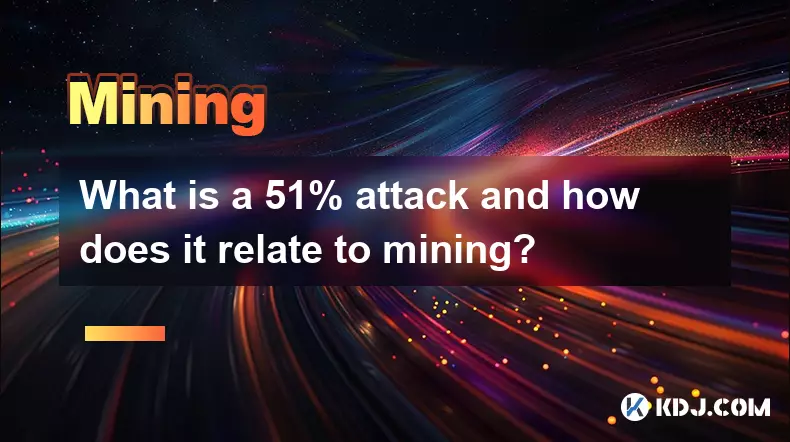
What is a 51% attack and how does it relate to mining?
Sep 04,2025 at 04:36pm
Understanding the 51% Attack in Blockchain Networks1. A 51% attack occurs when a single entity or group gains control over more than half of a blockch...
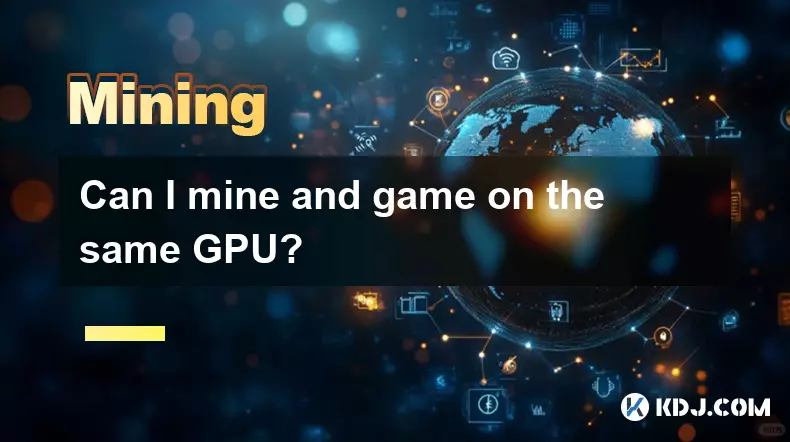
Can I mine and game on the same GPU?
Sep 04,2025 at 09:00pm
Running Mining and Gaming Simultaneously on One GPU1. Sharing a single GPU between cryptocurrency mining and gaming is technically possible but comes ...

What is the role of a stratum server in pool mining?
Sep 04,2025 at 06:01pm
Understanding the Stratum Server in Cryptocurrency Mining1. The stratum server acts as a communication bridge between mining pools and individual mine...
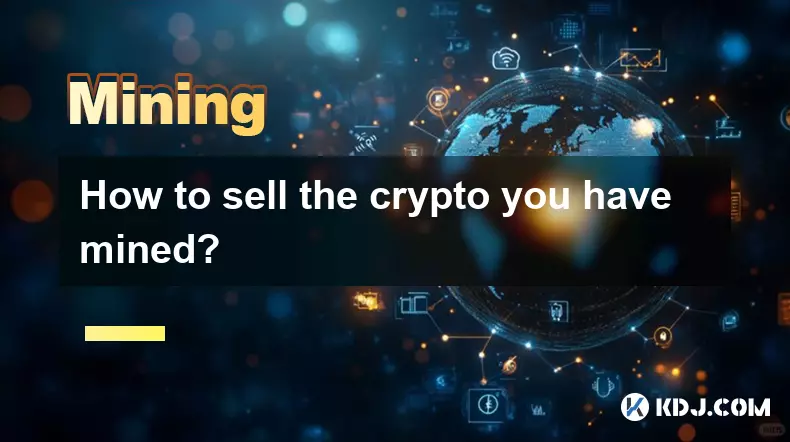
How to sell the crypto you have mined?
Sep 04,2025 at 03:54pm
Choosing the Right Exchange Platform1. Selecting a reliable cryptocurrency exchange is the first critical step in selling mined crypto. Platforms like...

How does merge mining work?
Sep 04,2025 at 07:36pm
Merge Mining: A Dual-Chain Approach1. Merge mining allows miners to simultaneously secure two or more blockchains using the same computational power. ...

Why do mining pools have fees?
Sep 04,2025 at 09:18pm
Understanding the Role of Mining Pools in Cryptocurrency Networks1. Mining pools aggregate the computational power of multiple miners to increase the ...

What is a 51% attack and how does it relate to mining?
Sep 04,2025 at 04:36pm
Understanding the 51% Attack in Blockchain Networks1. A 51% attack occurs when a single entity or group gains control over more than half of a blockch...

Can I mine and game on the same GPU?
Sep 04,2025 at 09:00pm
Running Mining and Gaming Simultaneously on One GPU1. Sharing a single GPU between cryptocurrency mining and gaming is technically possible but comes ...

What is the role of a stratum server in pool mining?
Sep 04,2025 at 06:01pm
Understanding the Stratum Server in Cryptocurrency Mining1. The stratum server acts as a communication bridge between mining pools and individual mine...

How to sell the crypto you have mined?
Sep 04,2025 at 03:54pm
Choosing the Right Exchange Platform1. Selecting a reliable cryptocurrency exchange is the first critical step in selling mined crypto. Platforms like...

How does merge mining work?
Sep 04,2025 at 07:36pm
Merge Mining: A Dual-Chain Approach1. Merge mining allows miners to simultaneously secure two or more blockchains using the same computational power. ...
See all articles

























































































